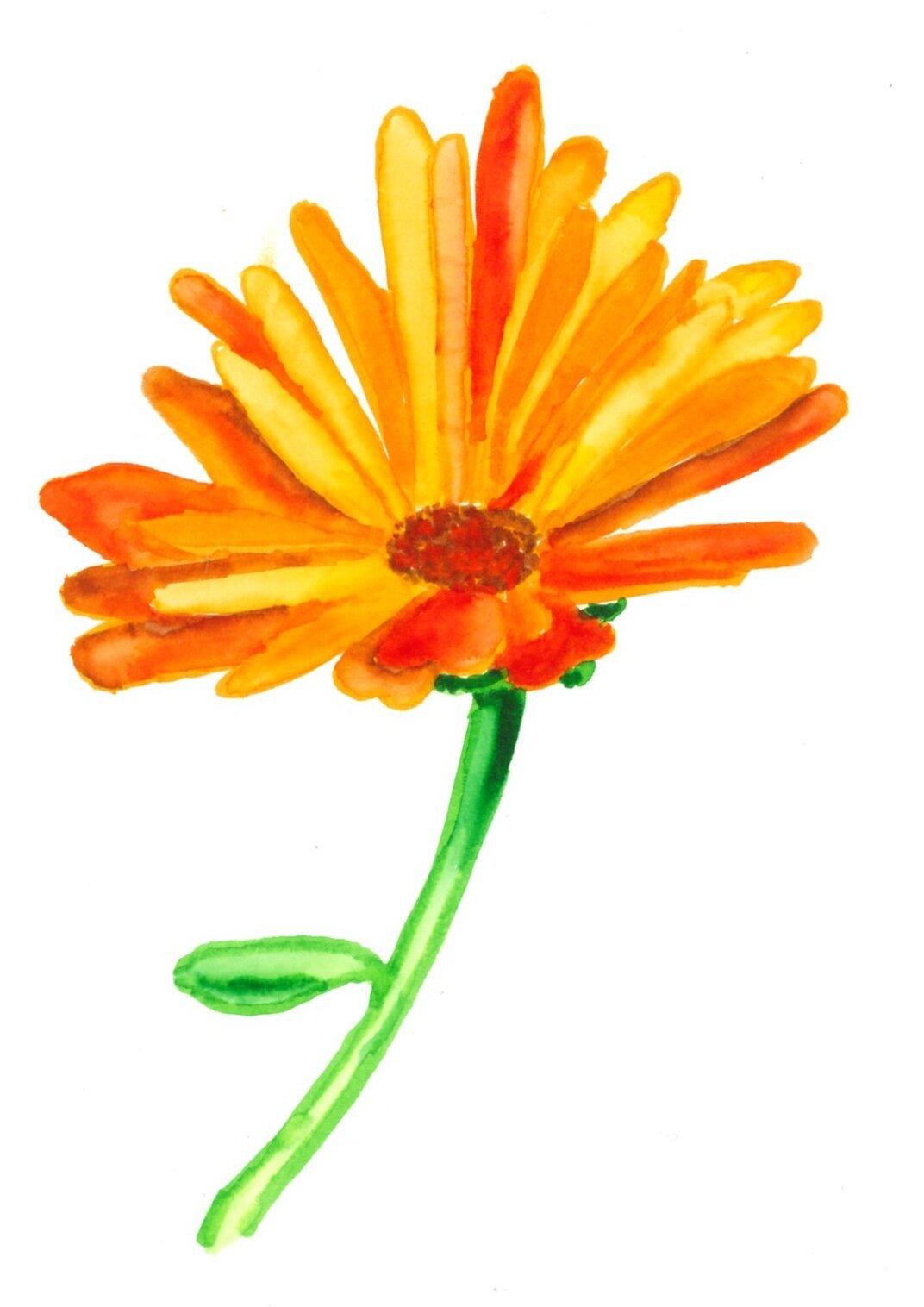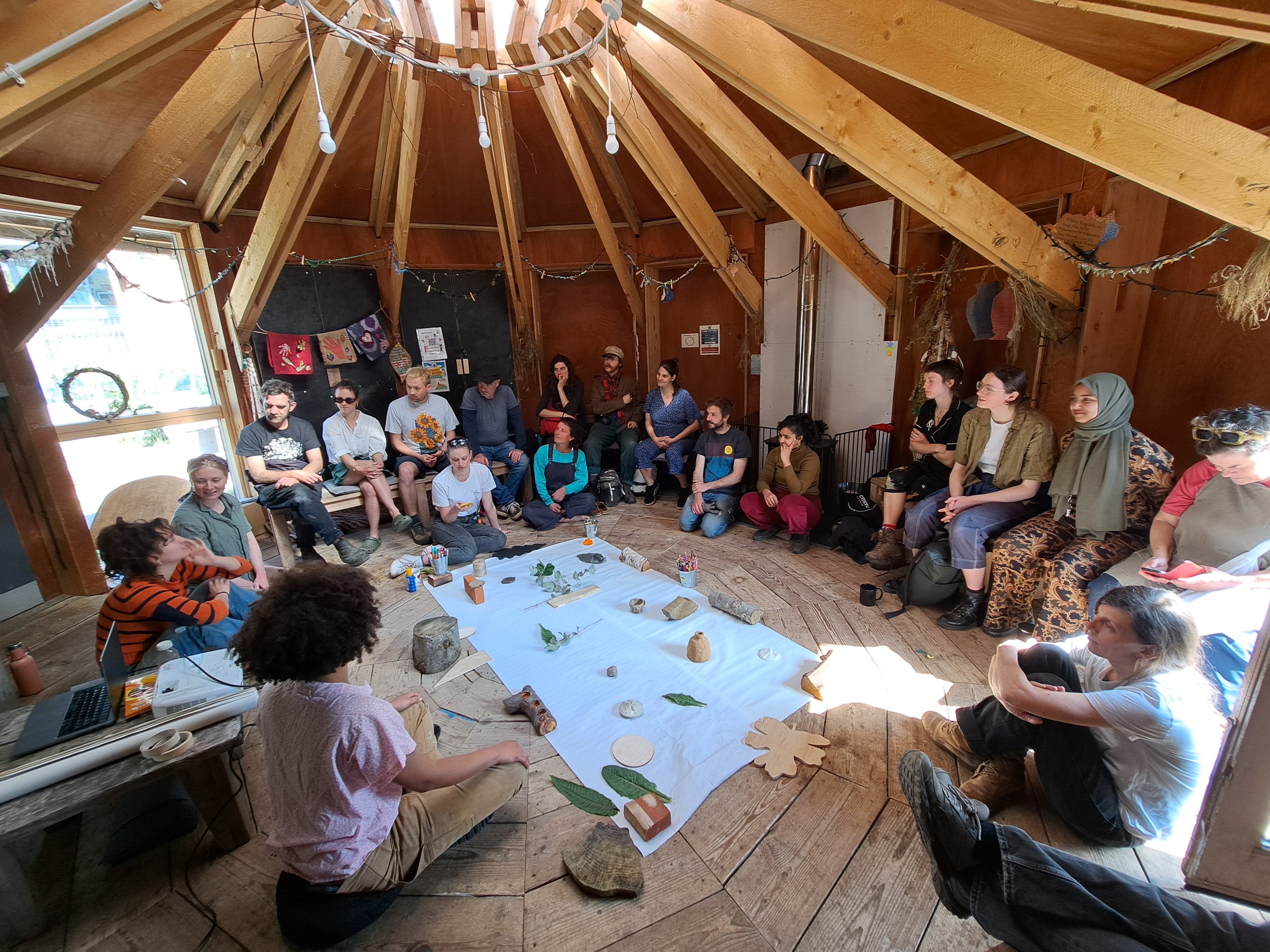Voices of the Earth - Marigold
This blog, written by Jocelyn Vick Maeer, one of GG’s young Voices of the Earth Fellows, and with contributions from Charlotte Gordon, is the third of seven reflections on the healing power of plants.
The first time I encountered Marigolds, they were called “Calendulitas”. I was helping to sow seeds and plant seedlings in the south of Spain, where a noun adorned with the suffix “ita/o(s)” makes it a tiny version of that thing. Everything we planted was young and small, so everything was referred to in this way. A plant was a “plantita”, aubergines were “berengenitas”, lettuces was “lechugitas”, carrots were “zanahoritas”, and calendulas were “calendulitas”. These tiny seeds were planted for the colour they would bring, the warmth and the insects. I had no idea about their edible or medicinal properties yet, but I was introduced to these a year later at the Story Garden. Charlotte is one of Global Generation’s Education & Community gardeners and is training in Intuitive Herbalism. As one of the facilitators of the Voices of the Earth project, she has been sharing her knowledge about various herbs, like calendula, with children, families and fellows like me. We have explored the medicinal uses of calendula by making a balm, which is useful for skin irritations and issues like insect bites and has been traditionally used for snake bites!
Charlotte’s experience
I became inspired to learn about plants at a time when I was living very simply, sleeping outside and bathing in rivers, travelling and learning through farming and communal living. This opened me up to a new reality of knowing, learning through experience, learning from people who lived closed to the land, those in a reciprocal relationship with the plants around them. My passion for plants came through eating and meeting our native species, getting to know them like I would a new friend. Through having my hands in the soil, picking and eating and talking about plants I developed an eye for them. Most other foragers or plants people can attest to developing an eye for the medicinal, edible and poisonous ones. I started to recognise plants who I didn’t know, they stood out amongst the others, there was an intuition that spoke loudly. I would take photos of the leaves, stem and flower, often taking part of the plant home to ID and research. Plants began to sing their songs in my heart and I began to learn from them directly, knowing their names before I had learned about them in books. They entered my dreaming world and it’s been an allyship ever since.
For me, Calendula offers something dynamic and physical, it’s not a plant to curl up and go to sleep next too. It invites dance and radiance and shines it’s bright starlight calling forth my inner sunshine. This was one of the first plant’s I encountered as a young travelling woman committed to learning the old ways of the plants. In a small holding in Wales, we picked baskets of the flower heads to make into salve for the horses muzzles. There I learnt about it’s properties to support the skin’s healing. This plant is celebrated by people and animals alike flowering from late Spring to Autumn. Calendula is a hardy plant, it is a strong plant, it likes being cut hard and deadheading the flowers increases the bloom and the petals can be eaten as well as made into a balm or a salve. A true sunshine plant of the garden.
Jocelyn’s Experience
Sometimes, as I walk around London it feels barren. Many pockets of green and flowers are carefully landscaped. It feels as though very little wilderness is allowed in the city. I wonder, if it were left alone, how long would it take for the wild plants to take over? I imagine buildings clothed in green, roads and pavements splitting open as the street trees seek out space beyond what they are allocated. Hints of this wilderness do exist in the cracks in pavements, forgotten verges, growing from the mortar of old walls. Somehow the seeds spread, sprouting, blooming and bringing up memories of untamed places.
This year was the first time I really paid attention to the wild plants. It happened because I started growing vegetables in a communal garden. As I was watching the ones I had planted, I also noticed the plants that turned up by themselves. They sprung up in the fertile soil at the base of my plot: poppies, dandelions, feverfew, yellow, pink and blue flowers I couldn't identify. Yarrow, broadleaf plantain, chickweed, herb robert and sow thistle came too.
At some point during early spring, wildflowers reminded me of their importance in the ecology of my garden. Until they arrived, my small plot was overwhelmingly green with broad beans and potatoes, garlic and chard. There was little variation in colour, nothing that would attract pollinators and feed insects. I looked around at other people’s plots to see what was growing - in a communal space there's always something new to find. It's often surprising, too, because 15 years ago this garden was a barren car park. Today, beds made from railway sleepers are home to rose bushes, hawthorn, dogwood, ferns, rosemary, bay, grasses, grapes, rhubarb, even a sizeable cherry tree.
In one corner, I found calendula. Some had bloomed a while ago and the seeds were dried out - ready to collect and spread. I sowed them in my plot, some along one side and a few in the middle where the soil was bare. They grew quickly, bigger than I had expected. They supported the other plants by breaking the wind and brought colours, cream, orange and yellow. They also made me happy.
In the audio recording, we share with you a traditional Indian folk tale about the importance of Marigolds. It ends with the protagonists, Juna and Sunita, returning from the underworld and travelling across the land spreading seeds. As the flowers grow, the relationship between the people and their Mother, the Earth, is healed. They begin to care for the land and live peacefully with each other. I wonder if this could be true for us today - if we bring more beauty to our immediate surroundings, will we care more for the planet?
This sound design, by Complicité sound designer Daniel Balfour, was created out of the work of children, young people and adults involved in the Voices of the Earth Project.
Each of the seven Voices of the Earth audio pieces were created as an invitation for you to spend time in Camden’s Green Spaces, listening to nature’s voices. Download the audio map here.









It’s a beautifully golden afternoon in late October, and I am sitting in Somers Town on a table outside the pub, admiring the seven foot sunflowers that are growing opposite the medical centre.